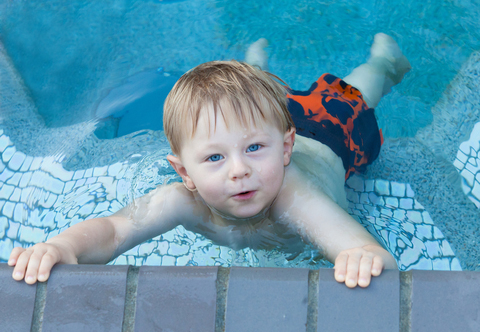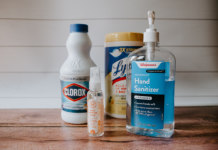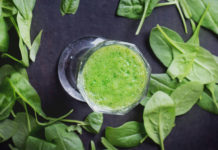by Dr. Craig A. Maxwell
Last month, “mommy blogger” Lindsay Kujawa, experienced a mother’s worst nightmare. Her nearly-two-year-old son, Ronin, accidentally slipped into a spa beside a swimming pool at a party and swirled around in the water, gasping for air. Lindsey fished him out almost immediately and he cried for about 45 seconds before calming down. The shaken mom thought everything was fine…until they got home.
It was then that Lindsay noticed her young son seemed incredibly fatigued and coughed hard, his whole body tensing up into a spasm as he did so. Concerned, Lindsay called her son’s pediatrician and left a message on her voice mail. Within moments, the pediatrician called her back and encouraged her to take Ronin to the ER immediately.
Ronin’s pediatrician knew what his mother did not. Ronin was experiencing the symptoms of secondary drowning. If the young boy did not get medical attention soon and was simply put to bed to sleep, he may never wake up again.
During the ambulance ride, it was discovered that Ronin’s pulse-oxygen level had plummeted to a dangerous 74% and he had developed a pneumonia-like condition that caused him to struggle to breathe. Luckily, medical intervention saved his life and within a few days, he was back to his healthy, happy self.
Another child wasn’t so lucky.
In 2008, a ten-year-old South Carolina boy named Johnny Jackson died in his bed after swimming in a pool for the first time. Johnny was diagnosed with both autism and ADHD, but it is not believed that either condition was directly responsible for his secondary drowning.
How Secondary Drowning Happens
It only takes four ounces of water to drown and it takes far less than this for the lungs to become damaged. After the initial exposure in a pool, spa, bathtub, etc., the water may fill up the oxygen-rich pores of the lungs, which restricts blood oxygenation and can result in a slow, progressive drowning though your child still walks and talks.
- Surfactant Stripped
There is a type of chemical in your lungs called a surfactant, which keeps the alveoli open so you can breathe. If water, soap, and synthetic chemicals get into your lungs, it can dilute this critical chemical and result in secondary drowning.
- Pulmonary Edema
If you or your child have an allergic reaction, to the chlorine in a swimming pool, for example, fluid may come from your bloodstream and invade your lung, causing a fluid build-up that leaves no room for air. Eventually, this stops the heart from beating.
Symptoms of Secondary Drowning
Secondary drowning can occur anytime between an hour to 72 hours after initial exposure.
Symptoms to watch for include:
- Difficulty Breathing
A common symptom of secondary drowning is an intermittent, distressed cough where your child’s body seems to tense with the effort. He or she may suck at the air as though desperately trying to draw a deep breath.
- Extreme Fatigue
While fatigue is certainly normal after a day of play, lethargy is not. If your child seems so tired, he or she can barely walk or stand up after a near-drowning incident, fluid could be slowly building up in the lungs.
- Personality Changes
Vacant stares, concentration difficulties, slurred speech, coordination problems, and urinary or bowel control issues after a near-drowning may indicate secondary drowning.*
*It is very important to note that special-needs children who exhibit the above symptoms as part of their disorder need to be monitored more closely after a near-drowning incident to avoid injury or fatality.
- Distended Stomach
Swallowing excessive amounts of water can cause your child to have an abnormally swollen or distended stomach.
- Vomiting
Vomiting is the body’s attempt to purge itself of fluid in the lungs and stomach.
- Low-Grade Fever
The distress of slow oxygen deprivation and the struggle for air can result in the development of a low-grade fever as the body fights for its life.
Understand Different Types of Drowning
There are 3 main types of drowning to be on the lookout for:
- Wet Drowning
A small or large amount of water enters the lungs, interfering with the transfer of oxygen into the blood. Distress is often obvious and immediate. However, it is very important to note that drowning doesn’t look like drowning.
- Secondary Drowning
A tiny amount of water enters the lungs, causing irritation and gradual fluid build-up, which can result in drowning up to 72 hours after initial exposure.
- Dry Drowning
The term dry drowning is often used interchangeably with secondary drowning but they’re not the same. In dry drowning, strong muscle spasms constrict the voice box and block the airway. This is often induced by the shock of hitting cold water, the panic of falling into the water or by breathing helium or other gases.
Although secondary drowning is rare, it’s important to know the symptoms. If, at any point, you’re in doubt about what you or your child is experiencing, head to the ER immediately. After all, it’s always better to be safe than sorry.
Read More:








